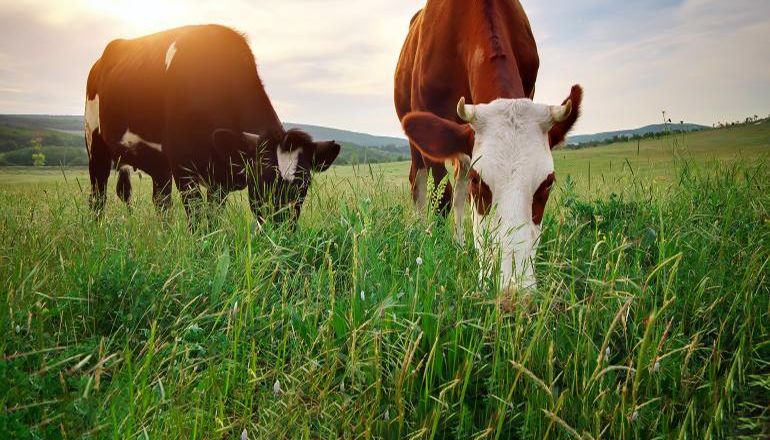Managed grazing makes better use of forage in a year of high-priced hay. After a drought with short grass and little hay, fall pastures grew fast with good rains.
Management-intensive grazing (MIG) extends fall grass supplies. Or the grass can be saved for winter grazing, says Craig Roberts, University of Missouri Extension forage specialist.
Controlled grazing cuts waste and extends grazing. In pastures not divided into grazing paddocks, hot-wire fences can restrict cattle grazing. Lush fall grass is divided into a day’s supply of feed. All it takes are step-in posts and a roll of wire. A single-strand electric wire holds cattle on a limited strip of grass. Research shows MIG adds one-third more grazing. Continuous grazing wastes feed. Cattle trample and defecate on ungrazed grass.
In a non-growing season, no back fence is needed on the grazed strip. Moving the hot wire forward in the pasture opens fresh feed. Cows entering fresh grass start grazing, mowing down grass. They don’t wander.
MIG systems are taught in grazing schools. New users can improvise a system in this year of short feed. Feed can be restricted to cows not needing weight gains. Grass gives a maintenance diet, Roberts says. If cows need body condition, grains can be fed on grass.
At fall MU Extension meetings, farmers report unexpected good fall pasture growth. They ask specialists how to use a grass bonanza. Fall growth is uneven across the state. “Calling the rains ‘spotty’ may be overstated,” Roberts says. “We had speckled rain.” Farmers with lush toxic tall fescue pastures should delay grazing. Delays lower toxins in fescue.
In another advantage of MIG, cattle move to fresh grass before they grub paddocks into the ground. New MU research shows that the highest toxin levels are found in 2 inches at the bottom of fescue plants. Overall, fall pastures are of high quality, Roberts says. It’s better than late spring grass. No seed heads grow in the fall. To delay grazing, use available hay and grain supplement to sustain the herd. Turn into a toxic pasture in the winter, not fall.
During hand feeding, restrict cows to small sacrifice areas. That prevents wide damage to pastures.
Roberts reminds herd owners to attend a grazing school in 2019. There will be MIG schools from MU Extension and the Natural Resources Conservation Service. Newer novel endophyte fescue schools are taught by the Alliance for Grassland Renewal. The schools teach replacing toxic fescue with non-toxic grass.
Novel endophyte varieties replace grass causing fescue foot. This isn’t endophyte-free fescue, Roberts says. Novel varieties are infected with a non-toxic fungus.
Fescue foot causes feet to freeze and hooves to fall off. That can be fatal.
Go to www.grasslandrenewal.org/education.htm for Alliance schools. Research on managed grazing came from the MU Forage Systems Research Center, Linneus. That is part of the College of Agriculture, Food and Natural Resources.







